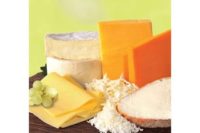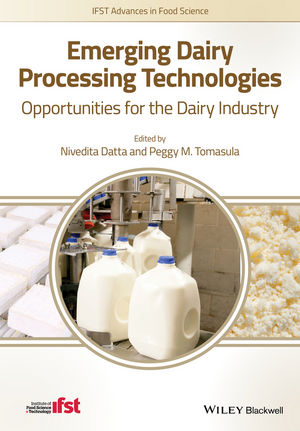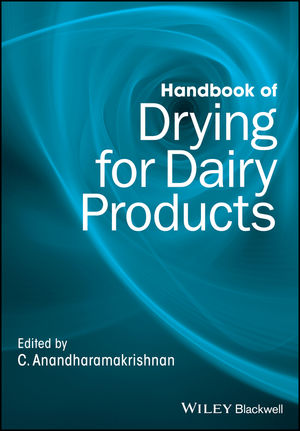
Bang for the Buck
By Lynn Petrak
Value-added products span all segments, as processors
deliver on promises of taste and convenience.
Everyone wants more for
their money. After decades of buying commodity-style products, consumers
are expecting — and receiving — greater benefits out of the
dairy foods and beverages they purchase.
Providing value-added products to the consumer, based
on attributes ranging from convenience to flavor to fun, has become a
priority for many processors. “Across every product line we have, our
goal always is to win consumer preference,” says Suzanne Ginestro,
brand manager for Oakland, Calif.-based Dreyer’s Grand Ice Cream Inc.
“We want to make people happy and love their experience, and you do
that by giving them value so they will do it again and again.”
The term “value added” has been a major
buzzword over the past several years, but it also is has become somewhat
ubiquitous. “It has been sort of bantered around,” acknowledges
Bill Haines, dairy industry consultant and former vice president of
innovation for Rosemont, Ill.-based Dairy Management Inc. (DMI).
Although the concept of value-added goods and services
is rooted in economics, Haines says, the term has a distinct definition
among food and beverage manufacturers. “The value of a product is
directly proportional to the benefits that the product offers and is
inversely proportional to the price,” he explains. “To increase
the value of a product, you can add more benefits or decrease the price. In
fact, that is what marketing is all about.”
Likewise, Tom Nagle, vice president of marketing for
the International Dairy Foods Association (IDFA), Washington, D.C., draws a
distinction between traditional products like gallons of fluid milk and
single-serve flavored milks sold in reclosable plastic bottles. “It
is the fundamental difference between offering the consumer a pure
commodity for which price is the only differentiator and offering them a
value proposition that delivers higher margin profitability and consumer
satisfaction,” he says.
Where the concept gets tricky is the determination of
the actual value to the end user. “It’s much more difficult
today,” Haines says. “For one thing, you have a greater degree
of diversity in the marketplace, from shifting age demographics to ethnic
diversity. And you also have more difficulty communicating your value
because of the fragmentation of the media.”
Given such marketplace complexity, delivering value
often means presenting the products clearly but differently to various
groups of buyers. In other words, it is back to the long-discussed topic of
target marketing. “It has been proven by Frank Perdue selling raw
chicken, for example, that you can add value in any number of ways,”
Nagle says. “You can do it based on any number of measures that
consumers care about, whether it is formula, taste, packaging or
brand.”
For each measure, then, value can be supplied through
customized products, Haines says. “If you look at successful firms
— Dell Computers, for instance — they have the ability to
maximize benefits right down to the individual user,” he says, adding
that while such an example is extreme, there is a lesson for grocery
product marketers. “Overall, there seems to be a trend for much more
specialized and customized products.”
That theory is translating into action at the
processor level. Many dairy manufacturers adhere to the philosophy that
consumers can and should be gauged in different ways, resulting in tailored
products and respective merchandising efforts.
Andreas Ostermyr, senior vice president of marketing
for The Dannon Co., Tarrytown, N.Y., says Dannon’s product line
reflects a general commitment to quality and price but has been
strengthened by specialized products. “Dannon’s mission is to
offer value with every product we sell with regard to price point, taste
and nutrition,” he says. “While products can capture brand and
category share through better nutrition, [consumers] will only buy again if
the brand delivers on taste and value.”
Focusing on certain customer groups while keeping in
mind a spectrum of demands has also been top of mind for Oregon’s
Tillamook County Creamery Association. “While we haven’t done
research on the topic of value-added products specifically, we have found
through consumer brand research that quality, taste and consistency are
very important to our customers,” reports marketing director Kathy
Holstad.
Aim For the Right Target
The rise of targeted, tailored dairy products has been
a significant change over the past decade, evident in every category to
some degree or another. “The dairy industry, up until recently, has
focused on increasing value by decreasing cost, but we are seeing more of a
trend on the benefits side,” Haines says. “The simplest one to
cite in the past 10 years is the introduction of a reclosable container for
single-serve milk, which did add a benefit to consumers.”
In fact, finding new ways to add value to an
entrenched product like fluid milk has been a priority of many
industry-funded efforts. “Over the last decade, school milk has come
as close to a commodity as any product, but the whole premise of what DMI
and MilkPEP (Milk Processor Education Program) are promoting in schools is
value added now, in vending and a la carte programs,” Nagle says.
“We are able to show that when you improve product presentation and
form — all of which add value to the consumer — you see
improved sales.”
In the case of school milk, Nagle says, the ultimate
value is perceived by students as well as operators. “What does
‘value added’ mean to a school foodservice director? It means a
more satisfied consumer,’ he says.
The success of single-serve milk belies the fact,
however, that going the value-added route isn’t always automatic.
“One of the things the milk industry has struggled with is that as
you add value, you have to retrain the retailer that milk has a value-added
proposition,” Nagle says. “They have a commodity mindset
they’ve established over the years, so getting them to think about
milk in a new way can be difficult.”
Beyond fluid milk, there are several examples of
industry innovations driven by the desire to add value to
“regular” products. In the yogurt segment, for example, the
advent of kid-friendly yogurts with all kinds of colors, mix-in ingredients
and package designs is a significant trend that has now resulted in further
fragmentation into baby yogurts and teenage or “tween” yogurts.
Yogurt manufacturers also have sought to add value to adult consumers, with
the development of health-oriented products in formats appealing to adults,
from reduced-carbohydrate and lowfat smoothies to probiotic-enhanced
products.
Yogurt designed around specific consumer benefits
continues to hit the shelf. Among the more recent entries: Healthy Heart
cholesterol- reducing yogurt from the Yoplait brand of Minneapolis-based
General Mills and a new line of baby yogurt from the Horizon Organic brand
of Dallas-based Dean Foods Co.
Dannon’s latest offerings can be considered
value added as well, Ostermyr says. “Two great examples are Danimals® DoubleCalD, which boasts
twice the calcium of other leading kids’ yogurts and vitamin D, and
Light ‘n Fit® with Fiber, which is the only light yogurt on the
market with added fiber,” he reports.
Similarly, the cheese category has been marked by a
surge of value-added varieties, touting different flavor, packaging and
health attributes. “Along with yogurt, the cheese industry is just
replete with examples of adding value through benefits. Just go to the rack
and look at all the shredded cheeses,” Haines says, adding that
customization is increasing for this segment as well. “Now
you’ll see one cheese for pizzas, one for Hispanic foods.”
Indeed, convenience has been a major driver of
value-added cheeses. Tillamook’s sliced and shredded varieties have
been well received by consumers who want the taste of aged cheese but
appreciate ease of use, Holstad says. “Based on the fact that our
fastest-growing SKUs are our sliced and shredded products, convenience is
still a top priority for consumers,” she says.
Convenience means different things to some customers,
though, so the cheese category includes products that are easy to open as
well as simple to incorporate into recipes or to eat as snacks on the go.
Sargento Foods, Plymouth, Wis., has developed several customized products
that address the range of demands, many of them launched in the past year
alone. Sargento recently introduced Bistro Blends flavored shreds,
duo packs of pre-sliced cheeses and kid-friendly Cracker Snacks in the
shape of stars, moons and sunbursts. Echoing other cheese industry trends,
Sargento has also keyed into the desire for combination packs, with its
line of Cheese Dips, shelf-stable snacks that pair cheese dips with
pretzels, tortilla chips or bagel chips.
According to Nagle, cheese and ice cream are similar
categories in that the growth of value-added varieties has been driven by
competition. “Ice cream and cheese have a more traditional
value-added proposition, because these guys constantly fight to maintain a
value edge over private label or commodity brands,” he says, adding
that private label manufacturers are having to keeping up with brand-led
innovations.
Meanwhile, within the ice cream category, value-added
items have centered on quality and flavor. The emergence of premium and
superpremium varieties, along with the parallel evolution of
“healthy” options, have been perceived by consumers as better
and better for you, respectively.
Dreyers, for its part, continues to keep busy with
value-added SKUs. The company’s new line of Dibs frozen ice
cream snacks — bite-sized chocolate coated pieces of ice cream
available in package formats for both supermarkets and convenience stores
— ties into consumers’ concurrent desires for taste,
convenience and portion control, says Ginestro. “Dibs are much more
munchable — you just pop them into your mouth,” she explains,
noting that the line was the result of extensive market research.
“This is a whole new way to eat ice cream and there is a lot of value
to that.”
As with virtually all value-added products, Dibs ice
cream snacks are sold at a slightly higher price point ($3.99 suggested
retail for 60-count grocery packages) than other ice cream novelties.
Marketers and industry observers agree that consumers have proven they are
willing to pay more for products that supply extra benefits, but just how
much depends on different factors.
For Nagle, that means going back to the consumer and
getting inside their proverbial heads. “It’s hard to go to
someone and say, ‘We’d like to give you this product, but
charge you more.’ It does require an understanding of price-sensitive
areas,” he says, adding a caveat: “There is a long history of
food and beverage companies coming up with value propositions that resonate
with manufacturers but don’t work with consumers. That speaks to the
importance of getting to the consumer first.”
Lynn Petrak is a freelance journalist based in the
Chicago area.
$OMN_arttitle="Bang for the Buck";?>


